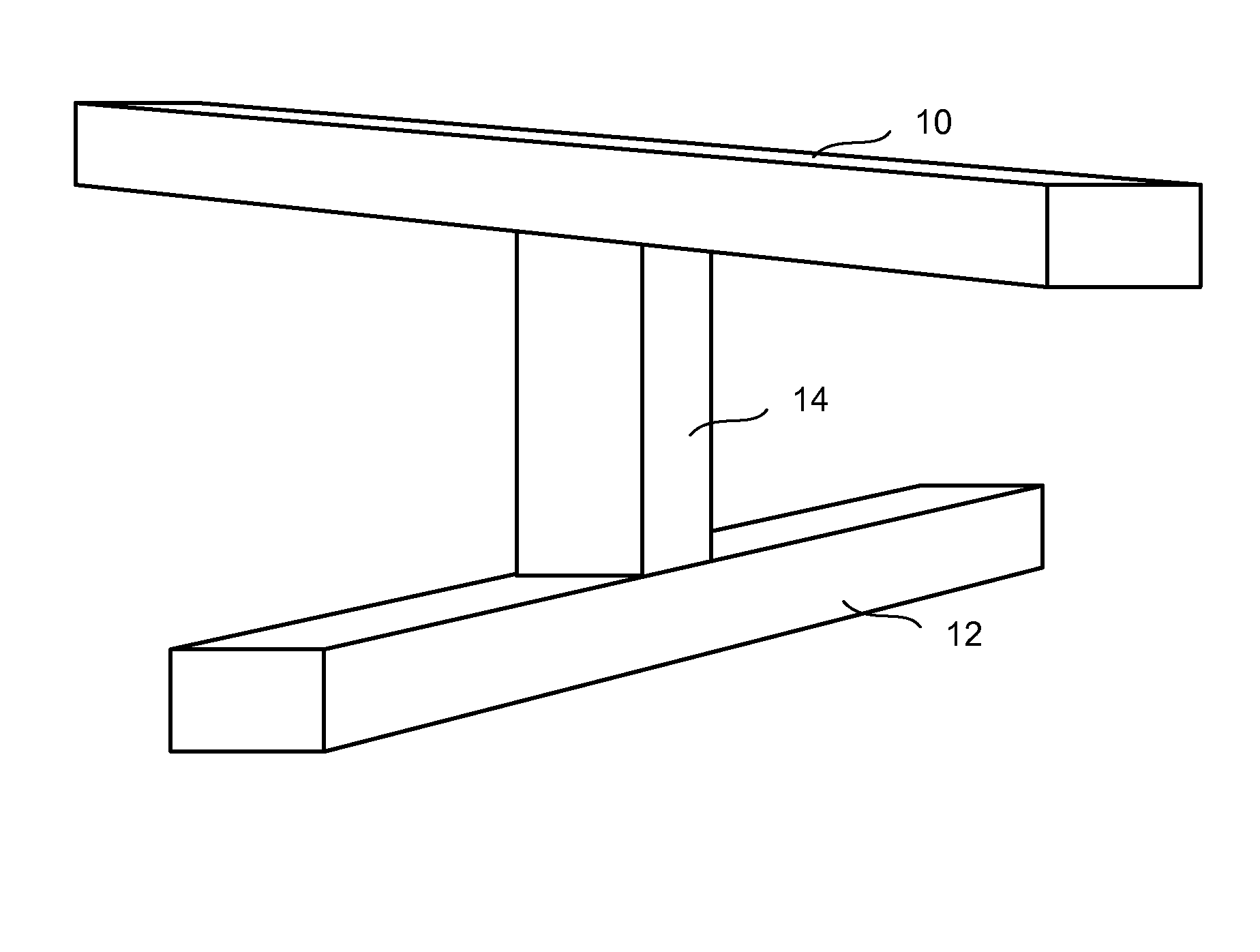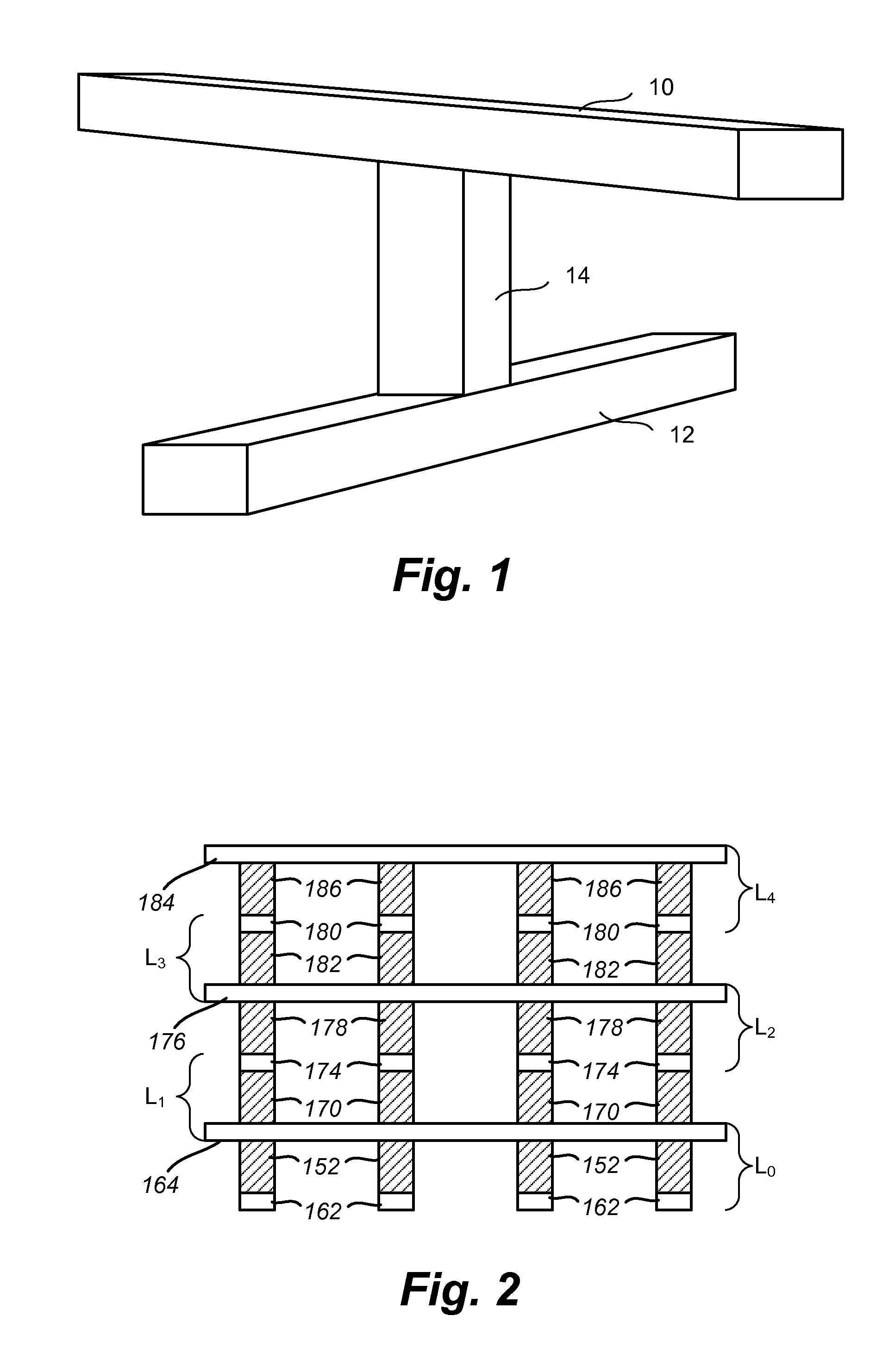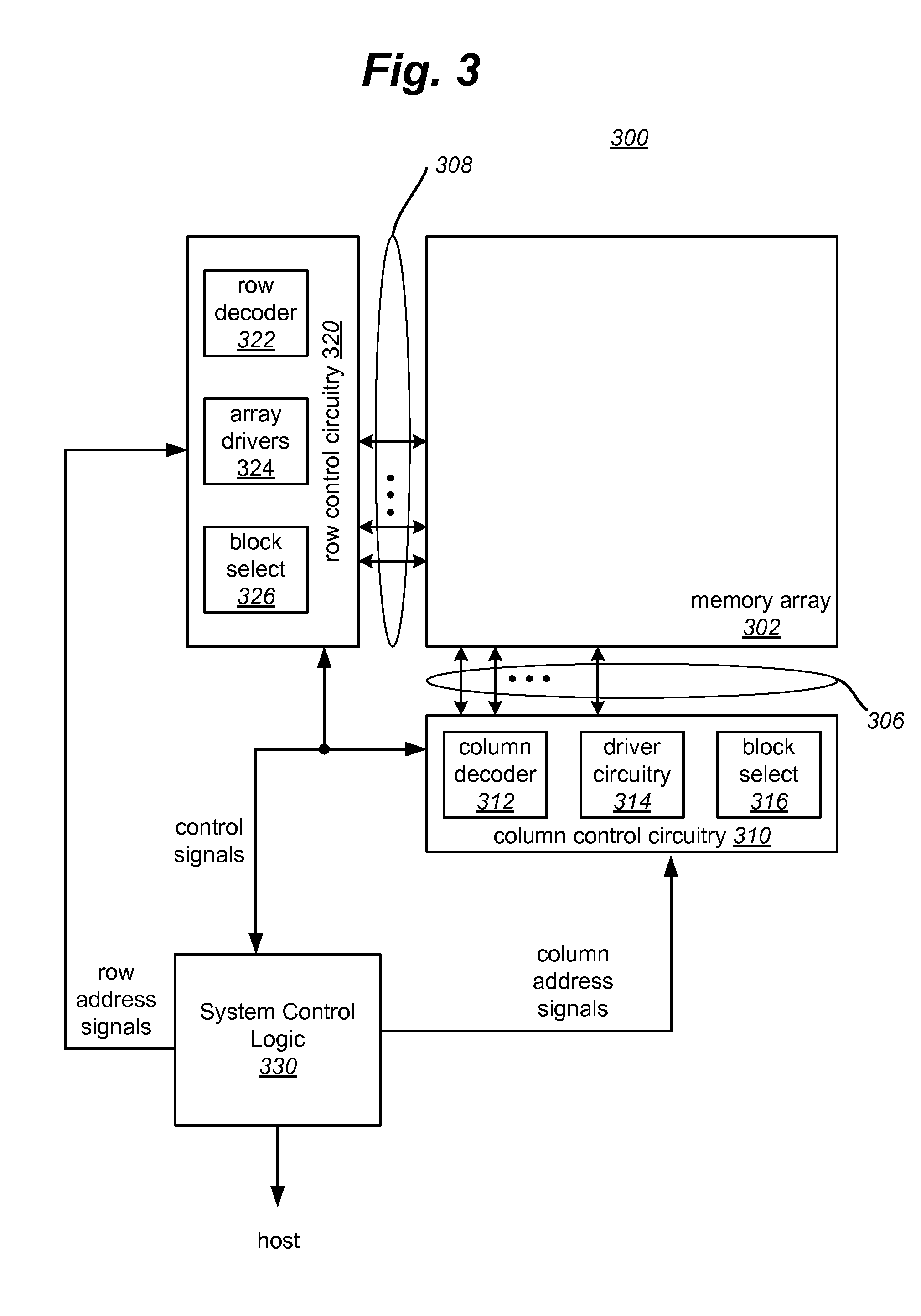Multi-Bit Resistance-Switching Memory Cell
- Summary
- Abstract
- Description
- Claims
- Application Information
AI Technical Summary
Benefits of technology
Problems solved by technology
Method used
Image
Examples
Embodiment Construction
[0047]A memory system is provided that includes memory cells with one or more reversible resistivity-switching elements. Various circuits and methods are disclosed for controlling the setting and resetting of the resistance for the reversible resistance-switching elements.
Memory Cell and System
[0048]FIG. 1 is a simplified perspective view of one embodiment of a memory cell 14, which includes one reversible resistance-switching element coupled in series with a steering element, between a first conductor 10 and a second conductor 12. The steering element can take the form of any suitable device exhibiting a nonlinear conduction current characteristic, such as a diode.
[0049]The reversible resistance-switching element includes reversible resistivity-switching material having a resistivity that may be reversibly switched between two or more states. For example, the reversible resistivity-switching material may be in an initial high-resistivity state upon fabrication that is switchable to...
PUM
 Login to View More
Login to View More Abstract
Description
Claims
Application Information
 Login to View More
Login to View More - R&D
- Intellectual Property
- Life Sciences
- Materials
- Tech Scout
- Unparalleled Data Quality
- Higher Quality Content
- 60% Fewer Hallucinations
Browse by: Latest US Patents, China's latest patents, Technical Efficacy Thesaurus, Application Domain, Technology Topic, Popular Technical Reports.
© 2025 PatSnap. All rights reserved.Legal|Privacy policy|Modern Slavery Act Transparency Statement|Sitemap|About US| Contact US: help@patsnap.com



